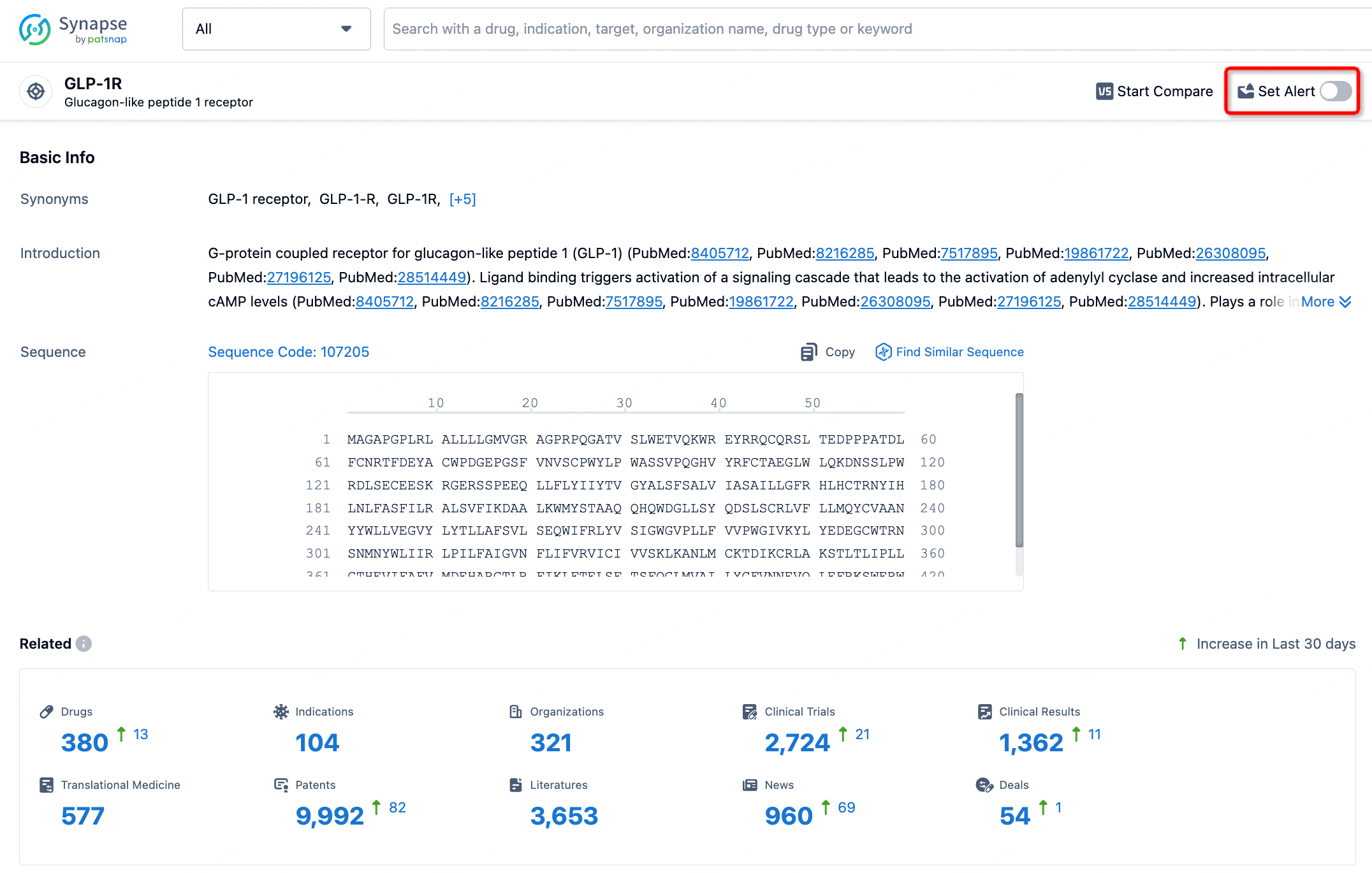Request Demo
What are PRAME inhibitors and how do they work?
21 June 2024
In the rapidly advancing field of oncology, targeted therapies represent a beacon of hope for many patients. One such promising avenue is the development of PRAME inhibitors. PRAME, or Preferentially Expressed Antigen in Melanoma, has emerged as a key target in cancer treatment due to its unique expression patterns and role in tumorigenesis. This post delves into the intricacies of PRAME inhibitors, exploring their mechanism of action and potential applications in combating various cancers.
Preferentially Expressed Antigen in Melanoma (PRAME) is a tumor-associated antigen that is largely absent in normal tissues but is overexpressed in a variety of cancers, including melanoma, breast cancer, ovarian cancer, and leukemia. This selective expression makes PRAME an attractive target for cancer therapy. PRAME functions as a repressor of retinoic acid signaling, which is crucial for cellular differentiation and apoptosis. By inhibiting retinoic acid signaling, PRAME contributes to the survival and proliferation of cancer cells. Therefore, targeting PRAME can disrupt these processes and potentially halt cancer progression.
PRAME inhibitors are designed to counteract the effects of PRAME overexpression. These inhibitors work by binding to the PRAME protein and blocking its interaction with the retinoic acid receptor (RAR). This restores the normal function of retinoic acid signaling, promoting differentiation and apoptosis of cancer cells. Some PRAME inhibitors may also function by degrading the PRAME protein or preventing its synthesis. By reinstating the proper signaling pathways, PRAME inhibitors can effectively reduce tumor growth and enhance the efficacy of existing treatments.
One of the notable features of PRAME inhibitors is their potential to be highly selective, minimizing damage to healthy tissues. Given that PRAME is minimally expressed in normal cells, targeting it allows for a more focused attack on cancer cells, reducing the collateral damage often seen with conventional therapies like chemotherapy and radiation. This specificity can lead to fewer side effects and improved patient outcomes.
PRAME inhibitors show great promise across a wide spectrum of cancers. In melanoma, where PRAME was first identified, inhibitors can be particularly effective. Melanoma cells often exhibit high levels of PRAME, which correlates with poor prognosis and resistance to standard treatments. By targeting PRAME, these inhibitors can potentially overcome resistance mechanisms and improve survival rates.
In hematologic malignancies such as acute myeloid leukemia (AML) and chronic myeloid leukemia (CML), PRAME inhibitors could also play a significant role. These cancers often harbor cells that express PRAME, contributing to disease persistence and relapse. Incorporating PRAME inhibitors into treatment regimens could help eliminate these resistant cell populations and achieve more durable remissions.
Beyond melanoma and leukemia, PRAME inhibitors are being investigated for their utility in other solid tumors. Breast cancer, ovarian cancer, and non-small cell lung cancer (NSCLC) are examples of cancers where PRAME expression has been documented. Clinical trials are underway to assess the efficacy of PRAME inhibitors in these contexts, with early results showing promise.
In addition to their direct anticancer effects, PRAME inhibitors could serve as valuable tools in combination therapies. By modulating the tumor microenvironment and enhancing immune recognition of cancer cells, these inhibitors could work synergistically with immunotherapies like checkpoint inhibitors and adoptive cell therapies. Such combinations might yield more robust and sustained responses, offering new hope for patients with refractory cancers.
While the development of PRAME inhibitors is still in its early stages, the potential benefits are immense. As research progresses, these inhibitors could become a cornerstone of personalized cancer therapy, providing targeted, effective treatment options with fewer side effects. The journey from bench to bedside will require rigorous clinical testing and validation, but the promise of PRAME inhibitors is undeniably exciting. By targeting a molecule that is pivotal to cancer cell survival, these inhibitors offer a novel and powerful approach to cancer treatment, embodying the future of precision oncology.
Preferentially Expressed Antigen in Melanoma (PRAME) is a tumor-associated antigen that is largely absent in normal tissues but is overexpressed in a variety of cancers, including melanoma, breast cancer, ovarian cancer, and leukemia. This selective expression makes PRAME an attractive target for cancer therapy. PRAME functions as a repressor of retinoic acid signaling, which is crucial for cellular differentiation and apoptosis. By inhibiting retinoic acid signaling, PRAME contributes to the survival and proliferation of cancer cells. Therefore, targeting PRAME can disrupt these processes and potentially halt cancer progression.
PRAME inhibitors are designed to counteract the effects of PRAME overexpression. These inhibitors work by binding to the PRAME protein and blocking its interaction with the retinoic acid receptor (RAR). This restores the normal function of retinoic acid signaling, promoting differentiation and apoptosis of cancer cells. Some PRAME inhibitors may also function by degrading the PRAME protein or preventing its synthesis. By reinstating the proper signaling pathways, PRAME inhibitors can effectively reduce tumor growth and enhance the efficacy of existing treatments.
One of the notable features of PRAME inhibitors is their potential to be highly selective, minimizing damage to healthy tissues. Given that PRAME is minimally expressed in normal cells, targeting it allows for a more focused attack on cancer cells, reducing the collateral damage often seen with conventional therapies like chemotherapy and radiation. This specificity can lead to fewer side effects and improved patient outcomes.
PRAME inhibitors show great promise across a wide spectrum of cancers. In melanoma, where PRAME was first identified, inhibitors can be particularly effective. Melanoma cells often exhibit high levels of PRAME, which correlates with poor prognosis and resistance to standard treatments. By targeting PRAME, these inhibitors can potentially overcome resistance mechanisms and improve survival rates.
In hematologic malignancies such as acute myeloid leukemia (AML) and chronic myeloid leukemia (CML), PRAME inhibitors could also play a significant role. These cancers often harbor cells that express PRAME, contributing to disease persistence and relapse. Incorporating PRAME inhibitors into treatment regimens could help eliminate these resistant cell populations and achieve more durable remissions.
Beyond melanoma and leukemia, PRAME inhibitors are being investigated for their utility in other solid tumors. Breast cancer, ovarian cancer, and non-small cell lung cancer (NSCLC) are examples of cancers where PRAME expression has been documented. Clinical trials are underway to assess the efficacy of PRAME inhibitors in these contexts, with early results showing promise.
In addition to their direct anticancer effects, PRAME inhibitors could serve as valuable tools in combination therapies. By modulating the tumor microenvironment and enhancing immune recognition of cancer cells, these inhibitors could work synergistically with immunotherapies like checkpoint inhibitors and adoptive cell therapies. Such combinations might yield more robust and sustained responses, offering new hope for patients with refractory cancers.
While the development of PRAME inhibitors is still in its early stages, the potential benefits are immense. As research progresses, these inhibitors could become a cornerstone of personalized cancer therapy, providing targeted, effective treatment options with fewer side effects. The journey from bench to bedside will require rigorous clinical testing and validation, but the promise of PRAME inhibitors is undeniably exciting. By targeting a molecule that is pivotal to cancer cell survival, these inhibitors offer a novel and powerful approach to cancer treatment, embodying the future of precision oncology.
How to obtain the latest development progress of all targets?
In the Synapse database, you can stay updated on the latest research and development advances of all targets. This service is accessible anytime and anywhere, with updates available daily or weekly. Use the "Set Alert" function to stay informed. Click on the image below to embark on a brand new journey of drug discovery!
AI Agents Built for Biopharma Breakthroughs
Accelerate discovery. Empower decisions. Transform outcomes.
Get started for free today!
Accelerate Strategic R&D decision making with Synapse, PatSnap’s AI-powered Connected Innovation Intelligence Platform Built for Life Sciences Professionals.
Start your data trial now!
Synapse data is also accessible to external entities via APIs or data packages. Empower better decisions with the latest in pharmaceutical intelligence.


